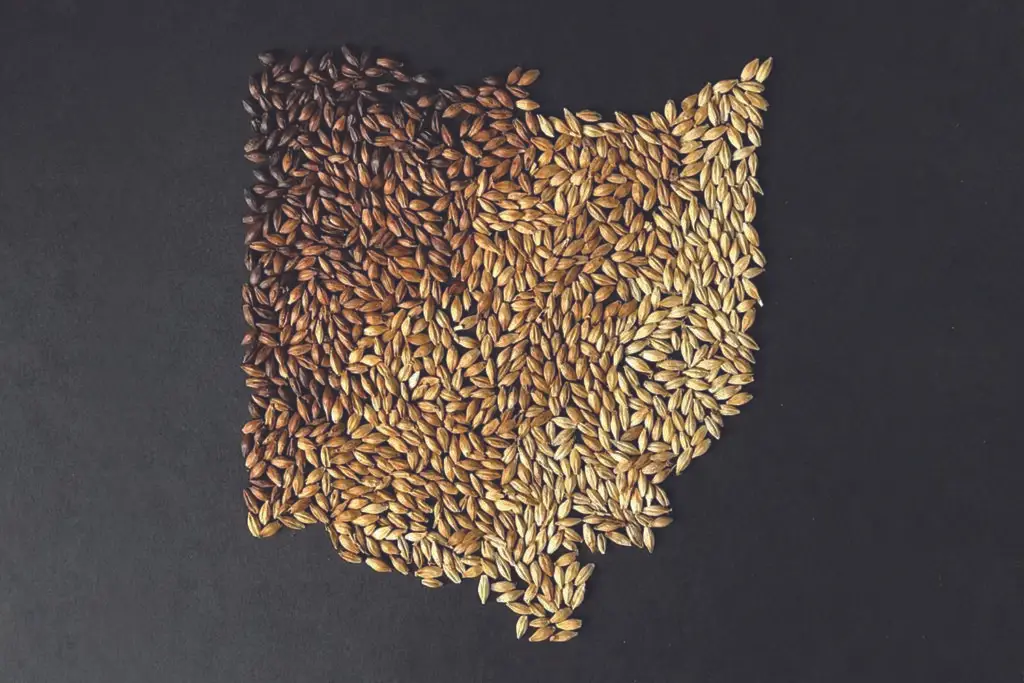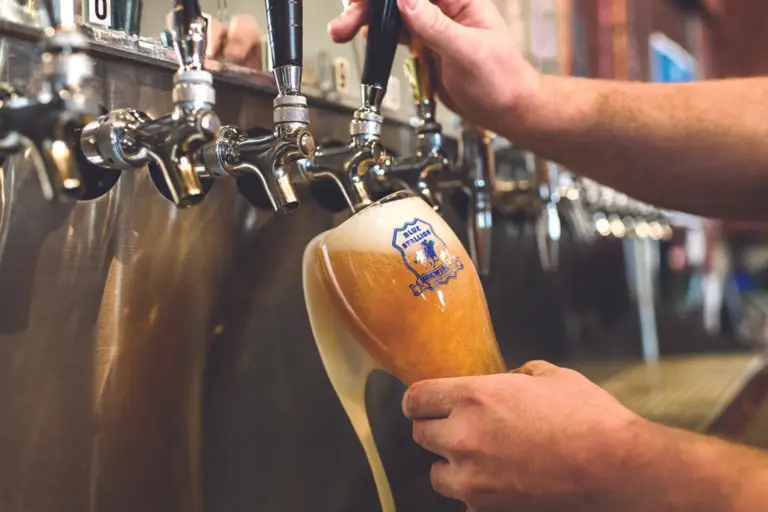By Rich Warren
The explosion of craft breweries across Ohio has given birth to another new craft industry inside the state: A small but dedicated core of craft maltsters has emerged to provide the breweries with locally produced malt.
Malt is one of the four essential ingredients (along with water, hops and yeast) to make beer. To make it, a grain, most often barley, is steeped in water to start the germination process. This develops malt enzymes that break down cell walls inside the barley, releasing starches that the yeast uses during the fermentation stage of the brewing process. The germination is stopped in a final kilning stage, where the malt is cooked to develop flavor.
Although it’s the hops that will provide many of beer’s signature flavors and aromas, it’s malt that’s essential in producing alcohol.
“Malt just doesn’t get the attention that hops do,” says Camille Harris of Sweet Acres Malt in New Vienna. “Hops are very sexy, but you could say that the hops are the show horse while the malt is the work horse.”
Most craft breweries prefer locally sourced ingredients to make their beer. Since barley hadn’t been produced in Ohio in any appreciable amounts for decades, the demand from the breweries prompted some farmers to include barley in their crop mix. Those farmers include Matt Cunningham at Rustic Brew Farm in Union County, and the Maag family near Columbus Grove in Putnam County, who use their barley in their enterprise, Barley Five Malt House.
For guidance in choosing high-quality barley strains and best practices in growing it, farmers have looked to the Ohio Agricultural Research and Development Center in Wooster and Cornell University for advice. And just like grape growers, Ohio’s new barley producers have found the concept of “terroir” comes into play with their product. Different soils and varying weather conditions across the state affect the barley’s intake of minerals and create subtle variations in its flavor. Cunningham has customers who put samples of his product in their mouths to discern flavor differences.
Barley growers face capital-intensive start-up costs, which, when combined with the farms’ small-scale production, result in comparatively high prices for locally produced malt.
“We just can’t compete with the huge commercial malt producers in price,” says Corey Maag at Barley Five. “But the demand is so high for local malts, brewers have been willing to pay.”
Both Cunningham and the Maags finish their malts at facilities on their farms using huge drums in which all three steps — steeping, germination, and kilning — can take place. The process takes about 10 days. During the final kilning stage, adjustments can be made in temperature or length of cooking time to produce flavors that can be described as “grassy,” “bready,” “toasty,” or even “chocolatey.”
“We can customize our malts to brewers’ needs,” Corey Maag says. “They tell us what they want, and we can control the malting process to produce it.”
Maltsters in urban settings like Haus Malts in Cleveland and West Branch Malts in Brunswick can use barley they’ve purchased from elsewhere and then follow the same process to produce malt.
“Malting has been going on for centuries, so there’s pretty clear guidance in how to do it,” said Randy Thatcher at West Branch. “There is a craft at making it and also a science, but fortunately it’s not rocket science.”
Matt Cunningham at Rustic Brew describes the satisfaction of walking into bars where beers made with his malt are sold.
“Hearing people order craft beers made with my craft malt is pretty cool,” he said. “It doesn’t get much better than that.”
Photo courtesy Barley Five Malt House.





